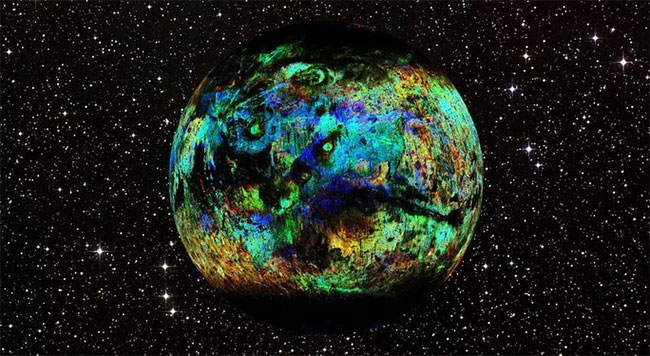A significant portion of the 317 Martian meteorites that have fallen to Earth may originate from a supervolcanic eruption from the Tharsis region over 1 million years ago.
Tooting is the largest supervolcano on Mars and may be the largest in the Solar System. Approximately 1 million years ago, an asteroid collided with the red planet, triggering a catastrophic eruption from this supervolcano, according to a new study published in Nature Communications.

Map showing craters and impact sites on Mars – (Photo: Nature Communications)
The lead author of the study, meteorite expert Luke Daly from the University of Glasgow, stated that Tharsis is an enormous ancient volcano, actually consisting of thousands of individual volcanoes that cover an area nearly three times the size of the United States. It was formed over billions of years through countless magma injections, heavy enough to tilt the planet by more than 20 degrees when it formed.
According to National Geographic, clues about the Tharsis supereruption come from Martian meteorites found on Earth, particularly a piece weighing several kilograms that fell in Morocco in 2011. Most Martian meteorites belong to a group called shergottites. Most of them are volcanic rocks with similar compositions, but a few, referred to as “depleted shergottites”, contain strange chemical signatures.
These “depleted shergottites” lack elements such as neodymium and lanthanum, which do not readily bond with minerals in Mars’ mantle. Surface rocks would contain these two elements, while mantle rocks would not. Therefore, depleted shergottites are essentially mantle rocks.
There are only two ways for a planet’s mantle rocks to move to the surface and then be ejected to another planet: through tectonic activity that stirs deep mantle material upward or through a violent eruption that brings material from deep within the planet to the surface. Mars does not have tectonic activity like Earth, so depleted shergottites could only be brought to the surface by a volcanic eruption.
This eruption was powerful enough to launch rocks all the way to Earth, indicating it was a supervolcano that researchers estimate to be the strongest volcano in the Solar System. The remnants of Tharsis today are a gigantic crater named Tooting, which NASA intends to “carefully monitor.”


















































